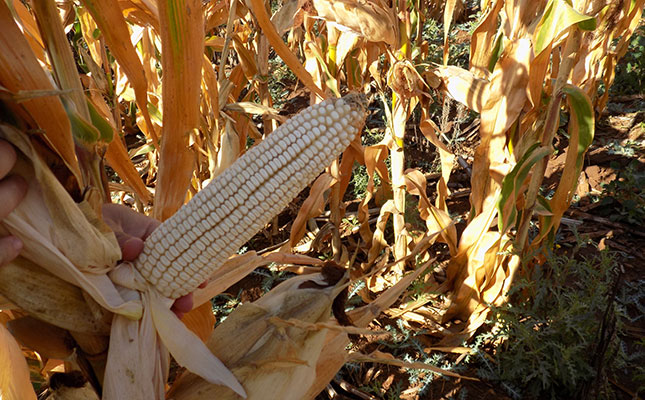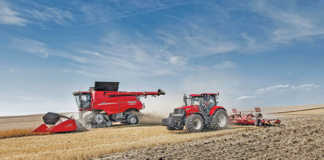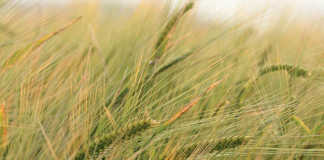
Photo: FW Archive
There is no consensus among nutritional and chemical scientists on the changes in levels of micronutrients such as iron, zinc, copper and manganese in grain crops. The unequal conditions of the experiments, difficult comparisons, discrepancies in statistical methods, and the lack of historical data cause these contradictory positions.
The controversy deepens when it comes to the accumulation of iron in maize, as the element is quite variable in modern cultivars. Moreover, despite the nutritional importance of maize, with annual global production standing at more than a billion tons in 2021/22, there are limited studies on the physiological changes associated with the absence or presence of micronutrients during the history of the maize production.
Modifying maize in the Atacama Desert
Intensive agriculture for thousands of years among prehispanic agricultural communities in Tarapacá in the Atacama Desert led to changes in maize morphology. Thus, our previous studies indicated that Tarapacá’s prehispanic farmers phenotypically modified their ancient maize.
These modifications included the significant augmentation of the sizes of cobs and kernels, from a mean length of 5cm to more than 15cm for cobs, and from 5mm to over 10mm for kernels.
Accordingly, Tarapacá maize is clearly divided into two phenotypic groups: a first group dated circa 400 BCE to 500 CE, and a later group from 500 CE to modern times.
Tarapacá maize also shows a low genetic diversity caused by human selection and genetic similarities between prehispanic and modern maize.
A more recent process of plant selection has been studied for nutritional quality. This research showed that the Green Revolution had a negative impact on the total amount of micronutrients in grains, but the nature of these changes is still unknown. Additionally, different methods and plant models have been used to determine where micronutrients accumulate in seeds.
Iron
Focusing on iron as a model, it has been shown, by a histological approach, that this essential micronutrient accumulates in vacuoles of a specific cell layer in the mature dry embryos of Arabidopsis thaliana (Thale Cress).
Iron distribution in maize has not been studied extensively. Recently, the use of Perls staining on maize showed that iron accumulates mainly in the embryo close to the endosperm face.
In this study, we used histological and quantitative methods to observe changes in iron distribution and concentration in archaeological and modern maize in continuous agricultural production in Tarapacá in the Atacama Desert.
We asked whether the loss of iron in crops could also be observed in archaeological maize, which was under constant agriculture selection in prehispanic times.
Dating of archaeological kernels
The kernels used in this analysis came from seven archaeological sites, all in the same area of the Atacama Desert, close to each other, in the Tarapacá region. To ensure the dates of Tarapacá maize, we performed radiocarbon dating 19 times directly on maize kernels and cobs from various sites in Tarapacá, including 10 times for the samples reported in this study.
The distribution of these calibrated age ranges is from 376 BCE to 1799 CE (95,4% probability). This range covers a time span of 2 000 years, including five different periods of the Tarapacá culture, from the Early Formative Period (circa 1000 BCE to 500 CE) to the Colonial Period (circa 1541 to 1810 CE).
During the Early Formative Period, the first agricultural display produced maize kernels with high contents of iron. During this period, maize had a low degree of manipulation. Thus, the amount of macrobotanical maize remains in archaeological sites do not exceed 3% of the total macrobotanicals recovered in the period’s settlements.
In addition, isotope studies in human remains from the Tarapacá cemetery indicate a gradual transition to the consumption of C4 plants among the Tarapacá groups. It is then stated that maize would not have been the main crop during the Early Formative period. Accordingly, agricultural production is extensive but not intensive.
At the end of the Late Formative Period, cultivation fields were extended to the north and south of Tarapacá, kernels and cobs increased in size, and people were consuming maize.
At the same time, as we observed in this study, there was iron loss in maize embryos. Agricultural production was clearly intensified, and we find storage pits, as well as cob and kernel debris, in different prehispanic villages such as Caserones and Lluga Túmulos, among others.
We postulate that the manipulation of maize was beginning, with no clear consequences yet to iron distribution, but with an important decrease in accumulation.
However, the full disclosure of human selection is recognisable in a third phase in agriculture, during the Late Intermediate Period and Late Period.
By then, most agricultural production had been relegated to artificial terraces, over 2 500m above sea level, which depended almost exclusively on rainfall.
A few settlements, such as Tarapacá Viejo, Pica and Lluga Túmulos, remained in the lowlands. The presence of maize in these villages remained steady and, in some cases, there was an intensification of production. Cobs and kernels reached their large size probably due to prolonged human selection and the use of seabird guano as fertiliser.
Concomitant with the human selection responsible for the increase in cob and kernel size, our results show that iron is rarely observed in the nuclei of embryo cells, and we observed that the total amount of iron was low.
Therefore the presence of iron in nuclei of maize and the large quantities of iron reported for this period reflect a period during which maize was not yet being manipulated, which was probably the first entry of maize into the region 2 400 years ago.
It has been suggested that a ‘dilution effect’ could be the cause of a decline in micronutrients. This is the mechanism by which the increase in the amount of dry matter in grains is not accompanied by an increase in micronutrients. Several authors agree that similar effects accompanied the development of modern cultivars.
Though we cannot establish the exact mechanism by which maize lost its micronutrient qualities in prehispanic times, our results suggest that a process of ancient agriculture in Tarapacá, including the progressive intensification of agricultural production and selection of grain size, affected the nutritional quality of maize kernels.
A similar process has been observed as a consequence of the Green Revolution over the past 50 years.
In terms of wheat, it has been reported that the introduction of semi-dwarf, high-yielding cultivars in the mid-1960s coincided with a progressive decline in the micronutrient content of the grain.
Nonetheless, no information is available on how intensification of agricultural production affected the micronutrient accumulation in maize kernels during the Green Revolution, and our results suggest that human selection could negatively affect the nutritional quality of grains.
Long-term effects of agriculture
There are other consequences of this study. One is the corroboration of ancient maize varieties, which naturally have large amounts of iron with the potential deciphering of Tarapacá maize genetics linked to iron presence.
Changes in iron distribution at subcellular levels is an interesting research focus to understand the causes of the loss of micronutrients in maize kernels via agriculture practices and selection.
It is in this regard that the use of archaeological seeds could help to understand the collateral effects on nutritional quality of crops under long-term agricultural practices, which is a crucial trait and a global challenge for worldwide agriculture.
From an agronomic point of view, it seems essential to consider the improvement programmes, in addition to the total content of nutrients, the eventual changes regarding where micronutrients are accumulated in the grains, including at the subcellular level.
This is an edited excerpt of a paper titled ‘2000 years of agriculture in the Atacama Desert lead to changes in the distribution and concentration of iron in maize’, written by Ale Vidal Elgueta et al and published in the journal Scientific Reports.













